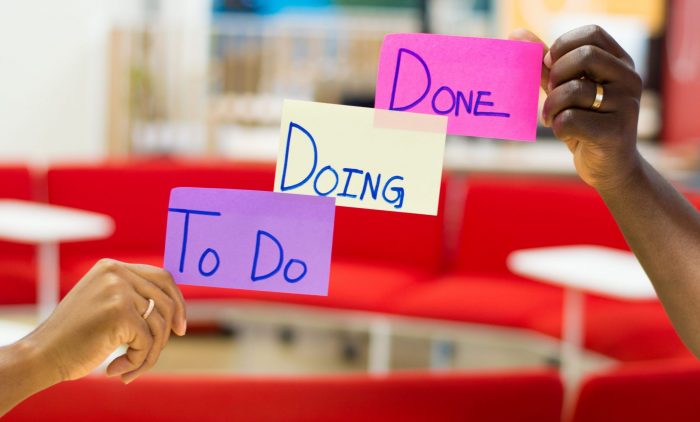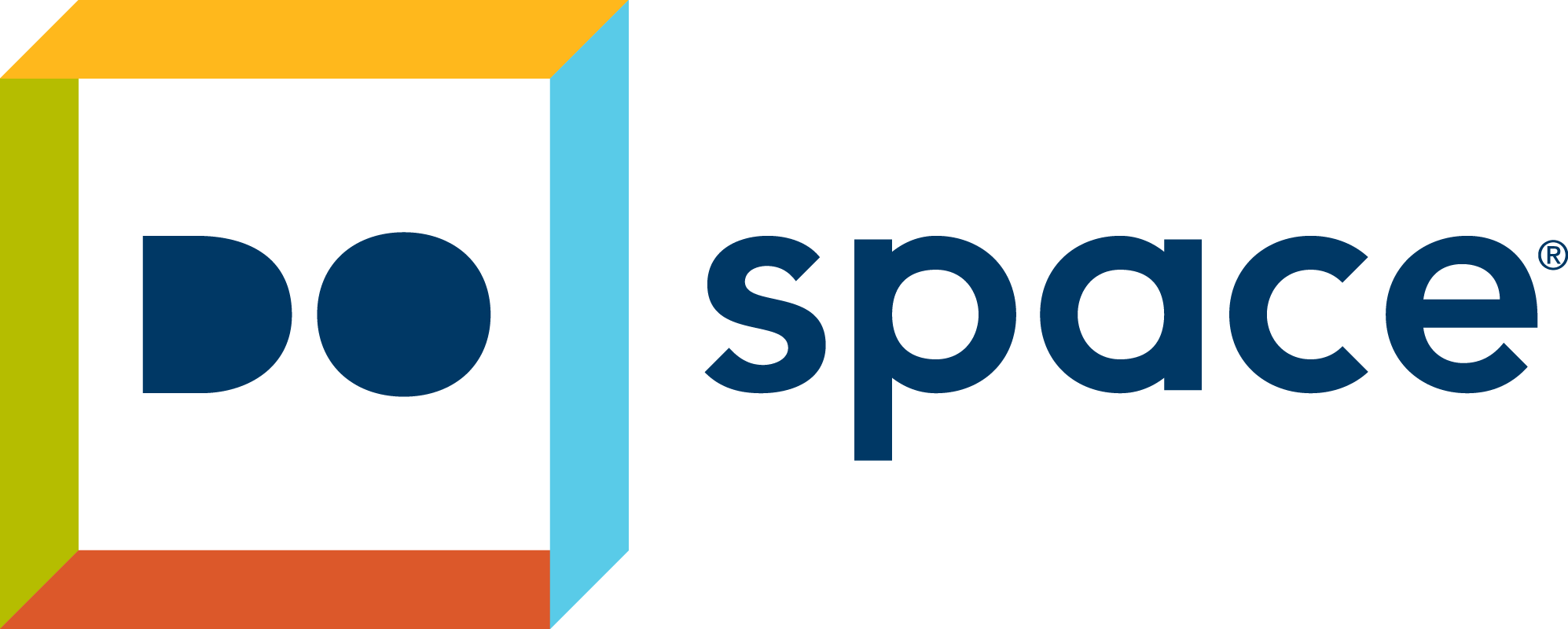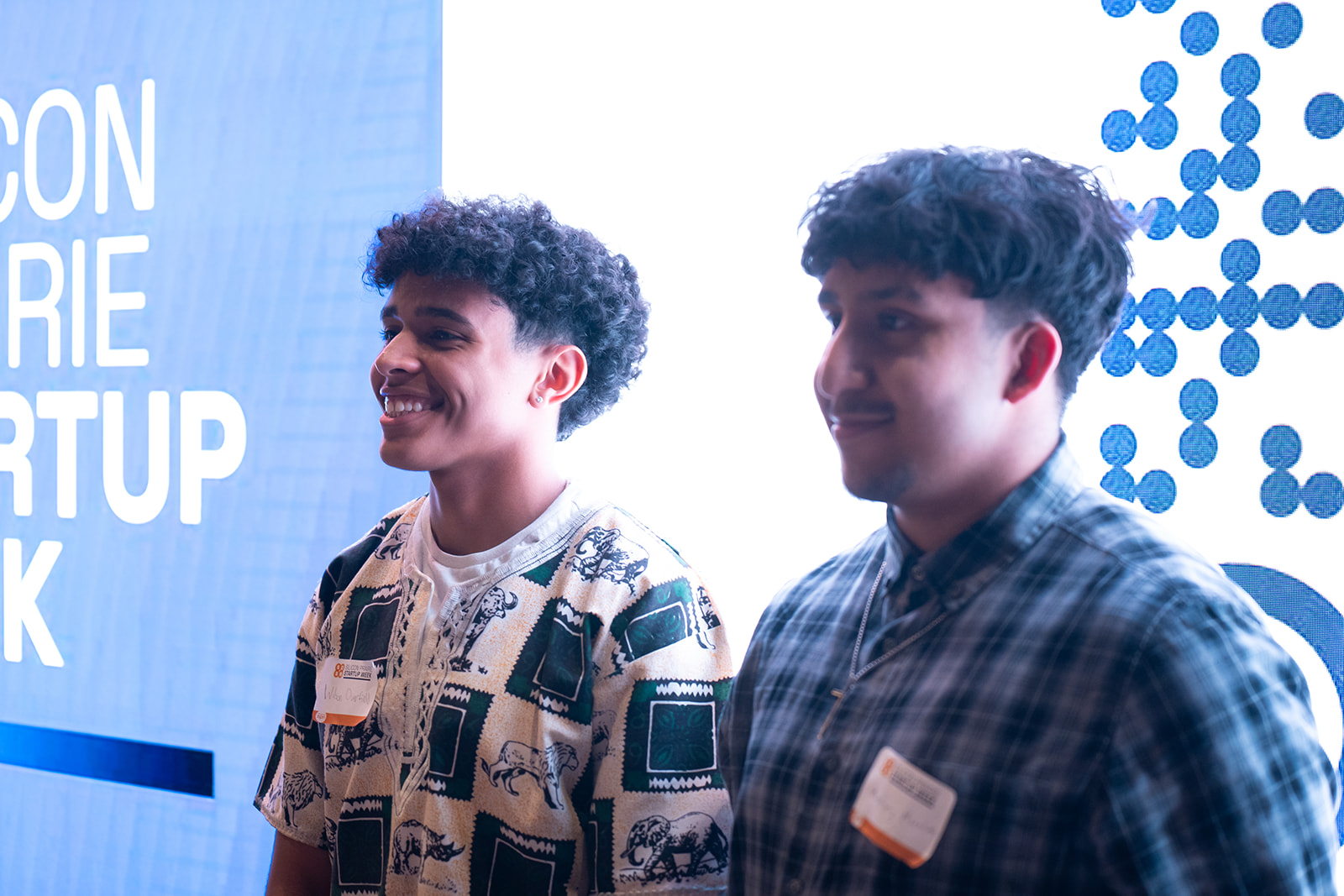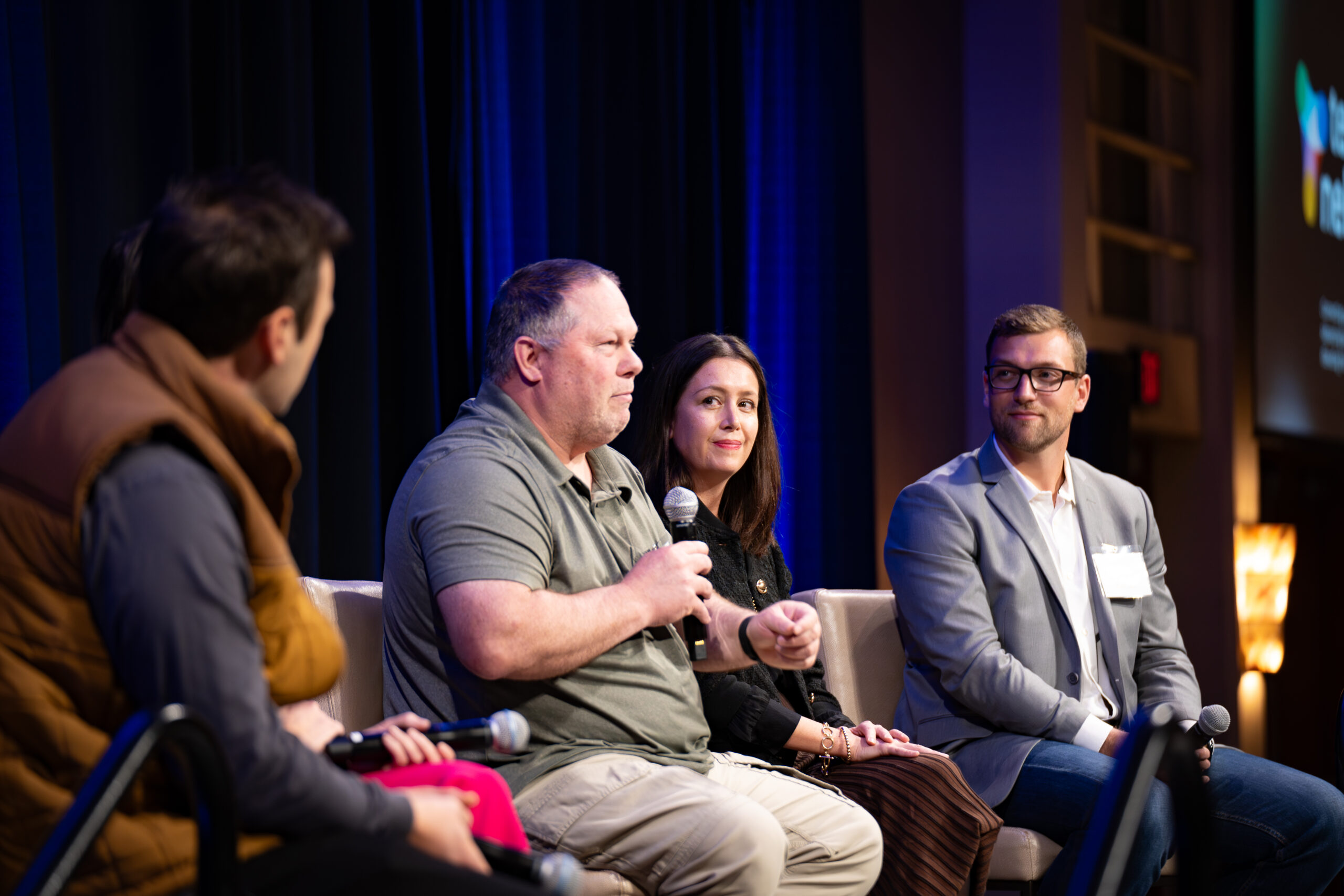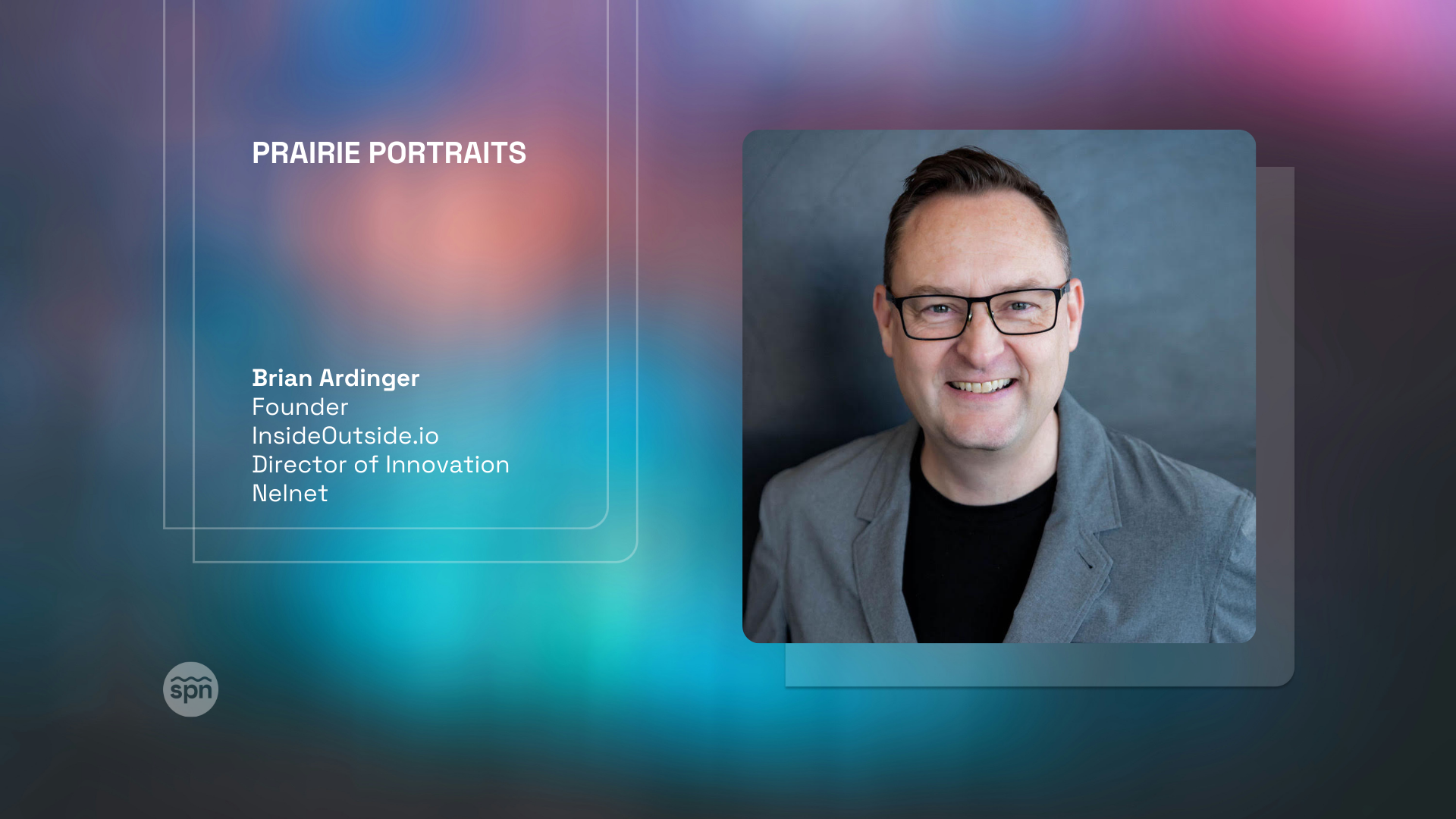This is part four of the “A” Word, Emily Truax’s ongoing series of articles on Agile. For previous installments, click here, here or here.
If you’re anything like me, you love lists. And if you love lists to the extent that I do, then we should join a support group.
Whether it’s weekly to-dos, Kanban tasks, or a grocery list, I go all out: special pens to emphasize important details, color-coded sticky notes for specific categories, checkboxes for completion, new paper if I forget how to write a “g”— it’s happened more than I care to admit.
Waterfall planning is very similar. You prep your resources (special pens and stickies), set all your dates and milestones (checkboxes), prepare risk mitigation techniques (new paper), and then plan, plan, plan. Soon, you have carefully DETAILED GOALS AND EXPECTATIONS, fully developed budgets, and work breakdown structures that could rival architectural drawings all wrapped up in a gorgeous binder à la Leslie Knope.
Unfortunately, in the agile world, by the time you’re ready to present your beautiful plan to your client, another team is already hard at work on your project. Oh, and it’s not your project anymore. Oh, and here’s your embarrassingly large office supply bill.
One of the first skills I had to master as a product owner was how to simplify. We didn’t have time to build our scrapbook of contingencies. We had only just enough time to pinpoint the problem and solve it. And while the best way to solve a problem is knowing what the problem is first, sometimes we only knew part of the problem, or the constraints we were working in, or what we absolutely should not do. So, as is the case with ambiguity and the unknown, we had to start by making an educated guess. Hooray for hypotheses!
Every proper experiment starts with an observation followed by a hypothesis. Scientific observations are done from an external, analytical third-party position (ideally with minimal bias and maximum emotional separation from the hypothesis). However, as is often the case with the scientific method, the hypothesis may not match the results, which often results in a failed experiment.
This thinking process is very similar to how professional coaches work with clients to identify starting points for self-development. Identifying goals is a very internal, introspective exercise that involves personal desire and emotional response. Why? Because goals come from a desire to change. If you have no desire or personal motivation to change something about yourself or the world around you, you have no investment in the success of any goal related to that thing. Conversely, if you have significant desire to change that thing, you need to identify and understand the reason behind that desire, the steps you need to take to enact the change, and expectations behind commitment, timeframe, and other factors that may impact your overall success. But, again, the original goal you’ve identified for yourself may result in too large, too complicated, or just too dull of a change for you to see the entire process through to its completion.
So, in both cases, we may end up with a pile of failed experiments. What do we do with them? Do we consider it all wasted time and effort and ink? Do we sweep the crumpled paper under the rug and start over?
Thankfully, when an agile hypothesis proves false, MEASURABLE PROGRESS takes effect. This is why the phrase “fail fast” exists in Agile: just like scientists, we can’t know if a hypothesis will work or fail until we attempt to apply it. If we fail, that doesn’t mean we’ve wasted our time or effort. We’ve learned something—whether large or small—about our approach, our desire, our drive, our way of learning or thinking, or even the goal itself. This progress is important to recognize, because it may become beneficial in identifying future goals or opportunities. Goals are also never, ever set in stone. A small change to a goal or expectation based on what you’ve learned may be all you need to achieve better results and be more accurate with your hypotheses in the future.
In the ever-changing world of tech, the new second Agile value of MEASURABLE PROGRESS over DETAILED GOALS AND EXPECTATIONS is a particularly powerful tool in our belt. As we evolve our goals and expectations, we will discover new best practices for our projects and builds, we will deliver in spectacular fashion, and we will become true innovators as well as true Agilists.
In my next article, I’ll make the case for updated value #3: COLLABORATION AND COOPERATION over NEGOTIATION AND COMPROMISE. Oh, and if you happen to know someone who specializes in office supply addiction, hit me up. Asking for a friend.
—
Emily Truax wanted to be a dragon when she grew up. Still does, but hoarding doesn’t pay the bills.
In her adulting life, she is a technical project manager with a decade of experience in Agile methodology. She holds her PMP and PMI-ACP from PMI, and her CSP-SM and CAL-E/T/O from Scrum Alliance. In her creative life, she is a freelance artist, designer, writer and sometimes-musician.
Emily lives in Omaha with her partner, Mike, and many houseplants.
